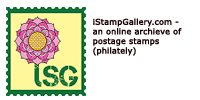
Technion
A commemorative postage stamp on the 50th anniversary of Technion (Israel Institute of Technology) :
 Issued by Israel
Issued by Israel
Issued on 23 Oct, 1973
Designer : The stamp was designed by D. Pessach & S. Ketter, Ma’abarot
Type : Stamp, Mint condition
Colour : Multi colour
Denomination : 1.25 Pound
About :
- The Academic Year 1973/74 was declared by the Board of Governors of the Technion – Israel Institute of Technology, as “Technion Jubilee Year”. It is a historic event not only for the Technion, but for the State of Israel as well. Over five decades the Technion has had a vital role in the development and strengthening of Israel – in industry, agriculture, defense, architecture, construction and many other fields.
- The Technion is the oldest among Israel’s institutions of higher learning. In his book “Altneuland”, Herzl already referred to the establishment of a technical college in Palestine. Dr. Paul Nathan, head of the “Hilfsverein der Deutschen Juden” in Germany, proposed a plan in 1908, and set out to obtain support for it. The Jewish National Fund acquired a site in an undeveloped section of Haifa, while the country was still part of the Ottoman Empire. The Russian tea merchant, K. Wissotsky, and the New York banker-philanthropist, Jacob Schiff, donated funds for construction. The foundation stone was laid in April 1912. Alexander Baerwald designed the massive building, which became a famous landmark.
- There was a delay in the opening of classes, as conflict flared around the question what the language of instruction would be – German or Hebrew. The victory of Hebrew in the “Battle of the Languages” was nationally significant and gave impetus to the development of technical terminology. World War I also caused a delay in the opening. The Technion building was utilized successively by the German, Turkish and British armies. The Technion Jubilee marks 50 years since classes began in 1924. The first engineering course got under way with 26 students specializing in construction and road-building. The early years were accompanied by financial difficulties, but gradually the institute consolidated its position.
- From the start the Technion was geared to meet the needs of building a country that was largely undeveloped. Under Dr. Shlomo Kaplansky as Director (1931-1950), the Department of Technology was established, later branching out into the faculties of Mechanical Engineering, Electrical Engineering and Chemical Engineering. During World War II, Technion students and staff members served in the British army. In the years preceding the establishment of the State, marked by a struggle against British rule, the Technion building was a center of “Haganah” underground activities.
- The establishment of the State, mass immigration, and the rapid expansion of the Israel economy, brought a new era to the Technion. Construction of a great new campus – Technion City on Mt. Carmel, Haifa – was undertaken in the early 1950’s, with General Yaakov Dori as President (1951-1965), and the active support of Technion Friends overseas. Student enrollment rose dramatically, and new subjects were introduced.
- The Faculty of Aeronautical Engineering has been instrumental in the emergence of Israel’s aircraft industry. The Faculty of Agricultural Engineering helped mechanized production. The Department of Food Engineering trained professional manpower for the food industry. The remarkable growth of Israel’s electronics industry has been closely linked with Technion-trained electrical engineers, while modern management methods were applied by Technion-trained industrial managers. New Technion departments were also established in the sciences – mathematics, physics and chemistry.
- The expansion continued with Alexander Goldberg as President (1965-1973). The Technion has become a major technological university by international standards, widely known for the excellence of its teaching and research. In recent years, the Technion has added departments in Computer Science, Bio-Medical Engineering, Materials Engineering and Solid State. In 1970 the Haifa Medical School merged with the Technion, thus increasing Technion’s involvement in the life sciences. Immigrant students and faculty members from Russia as well as the West were absorbed by the Institute. The Technion Research and Development Foundation, which administers sponsored research projects, has an annual volume reaching IL 30 million.
- In October 1973, General Amos Horev assumed office as President. Currently the Technion has 9,000 students (of whom 3,000 are studying for the M.Sc. and D.Sc. degrees), 1,500 members of the academic staff and 22 departments covering a wide range of engineering and science disciplines. Thousands of Technion graduates fill vital roles in Israel’s economy, industry and defense. They are the core of Israel’s technological capability.
- Over the years, Technion’s development has been greatly assisted by the Technion Societies – in the United States, Britain, Canada, South Africa, Mexico, France, Australia, Argentine, Uruguay, Switzerland, Holland, Sweden, Venezuela and Brazil.
- The Technion’s Jubilee is a significant and festive event for the entire State of Israel.
- R. R.
Subscribe
Login
0 Comments







